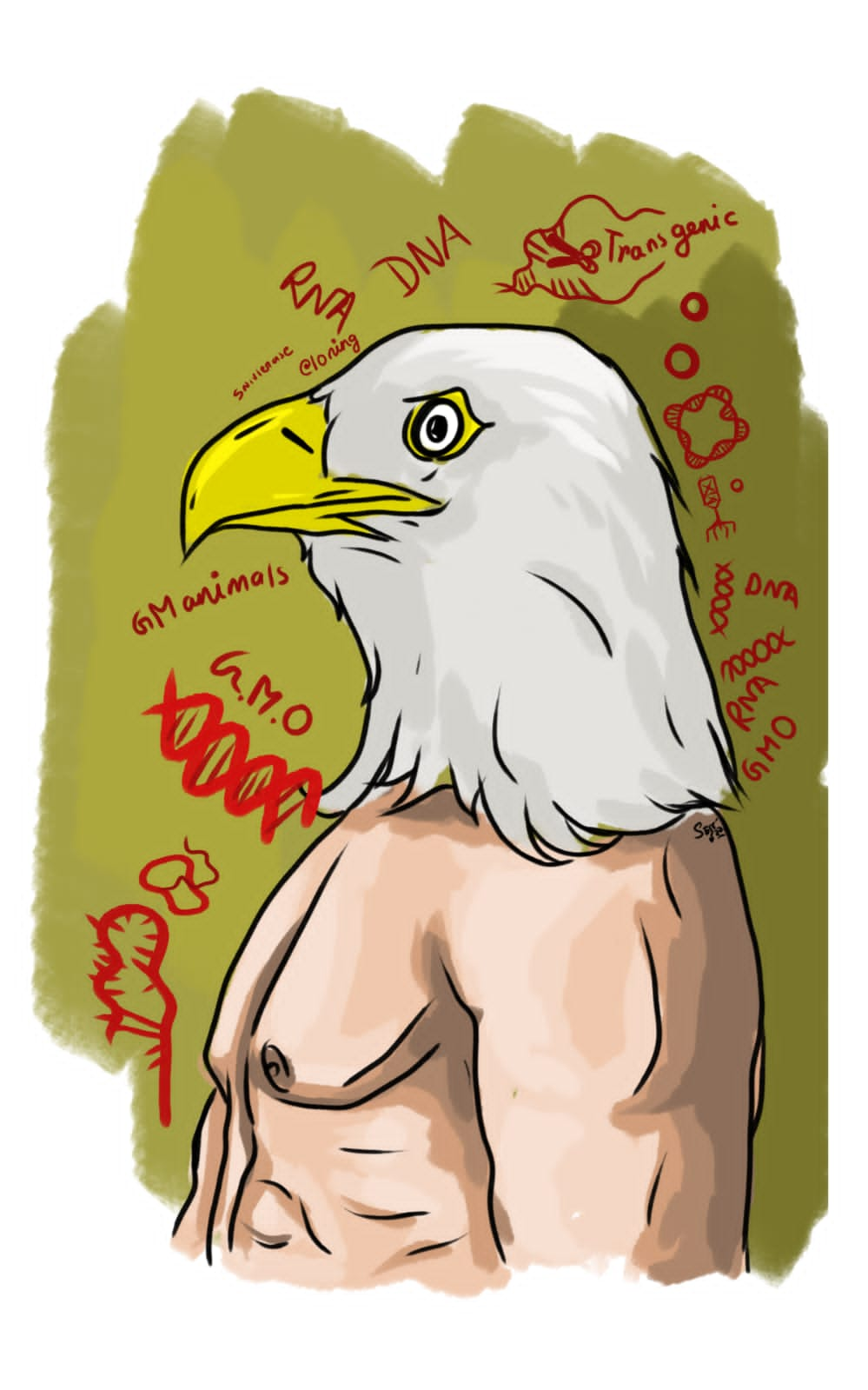Genetically Modified Organisms
Review
Swastik Kundu
 Credits: Sohham Chatterjee, The Decadents magazine
Credits: Sohham Chatterjee, The Decadents magazine
GMO stands for Genetically Modified Organisms. If you break it down word by word, you get Genetically, which means genes, Modified, which refers to a positive change to the genetic structure and lastly, Organisms, which are living beings. So if you bring it together, you get living organisms that have had their basic genetic code altered somehow.
Tweet
Genetically Modified Organisms (GMOs) are often considered harmful - even poisonous to health though scientifically proven otherwise. The question is WHY? Why are GMOs not accepted by the public even after strong recommendation from scientists? Often known as the future of food technology, they seem to be the victim of multiple crucifying public opinions.
In a recent survey taken in China, 11.9% of the respondents gave a positive view on GMOs, 41.4% were neutral, and 46.7% had a negative response to GMO technology. According to a PEW poll of 2015, while 88% of scientists considered it safe to consume Genetically Modified Food, only 37% of U.S. adults supported the claim.
"About half of U.S. adults (51%) think Modified Organisms are worse for people's health than foods with no genetically modified ingredients, while 41% say G.M. foods have a neutral effect on health. Just 7% say they are better for health than other foods."
Why this discrepancy between what science tells us about GMOs and what people think?
Most media outlets claim that the main issue with GMOs is the involvement with multinationals, but these issues are not specific to GMOs. Then why are only GMOs being targeted?
I went through a set of packed food items in the fridge and checked their labels for GMO or non-GMO identity marks and what I found was far from satisfying. Non-GMO companies have a way of winning over the market by criticising the use of GMO technology. The hurdle faced by GMOs is negative publicity from traditional companies making non-GMO products, who portray GM food products as harmful commodities that must not be consumed and thereby mislead consumers by misreporting the science behind GMOs.
Scientifically what makes GMO products so quickly discreditable is their lack of intuitive appeal.
According to Stefaan Blancke, Assistant Professor at the Tilburg School of Humanities and Digital Sciences and the Department of Philosophy, "by tapping into intuitions and emotions that mostly work under the radar of conscious awareness, but are constituent of any normal functioning human mind, such representations become easy to think"—making such appeals more memorable while at the same time exponentially increasing the chances of transmission of said appeals in the form of information without checking its credibility and efficacy.
Therefore anti-GMO advertisements which work by appealing to our gut are readily accepted and remembered by us because it just makes more sense to believe that GMO products would do more harm to us than good.
When the first GM food product came out - tomatoes - there was a widespread belief that they contained fish DNA as non-GMO brands portrayed GM tomatoes with a fish inside it or with a fishtail, triggering the notion that GM tomatoes taste like fish which they did not.
Opposition to GMOs by the public at large is based on psychological essentialism, which makes us think that when DNA from one organism is introduced into another organism, the latter must bear all the characteristics of the former; hence, the origin of the fish tomato theory.

However, Genetic Modification/Engineering does not work like that at all. The characteristics of a particular organism may originate from a specific gene in its DNA, which may then be introduced in another organism to enhance its ability to fight against a specific environmental factor that might be detrimental to its survival. Hence, part of that specific gene conferring that specific trait is isolated from the donor organism and introduced into the recipient organism, thereby enabling it to fight the factor. For example, if I was a part of a malaria-resistant species, scientists might isolate the gene responsible for the malaria resistance trait and introduce it into organisms which are ordinarily susceptible to the disease, thereby making them malaria-resistant.
Anti-GMO and non-GMO companies exploit this feature of human psychology to undermine the credibility of GMOs in society. Essentialism is also a part of existing religious beliefs, which considers genetic modification to be a heinous crime. In religious and theological societies altering DNA is compared to going against nature and is expected to bring enormous disaster to the society. Factors like disgust for contaminated products also inhibit understanding and consequent adoption of GMOs.
From a commercial perspective, GMOs create another major problem- industrial monopoly in the production of GMO seeds. Individual companies with GMO seeds have patents over their inventions (seeds), often contractually prohibiting farmers who grow GMO plants from using the second generation seeds obtained from the harvest for subsequent farming (PepsiCo vs Gujarat farmers, case in point). Similarly, Monsanto, a leader in the AgriBiotech sector, introduced Genetic Use Restriction Technology (GURT), also known as Terminator Technology or Suicide Seeds, whereby the second generation seeds obtained from the harvest would essentially be sterile, thus making the farmers dependent on them for seeds and other instrumental factors. While farmers are not prepared to surrender their independence, they are also incapable of sustaining the prolonged investment costs of GMO seeds, which alters the fundamental structure of GMO production into a single-sourced market with no farmers to produce them.
Swastik Kundu is an incoming freshman at the American University’s School of International Service in Washington DC, majoring in International Relations and Affairs, concentrating in Climate Diplomacy and U.S. foreign policy on China and a possible minor in Political Public Relations. Swastik describes his writing style as conversational. His writing seemingly breaks most grammatical rules but often makes it easier for readers to connect with him and better understand his perspective.
signup with your email to get the latest articles instantly